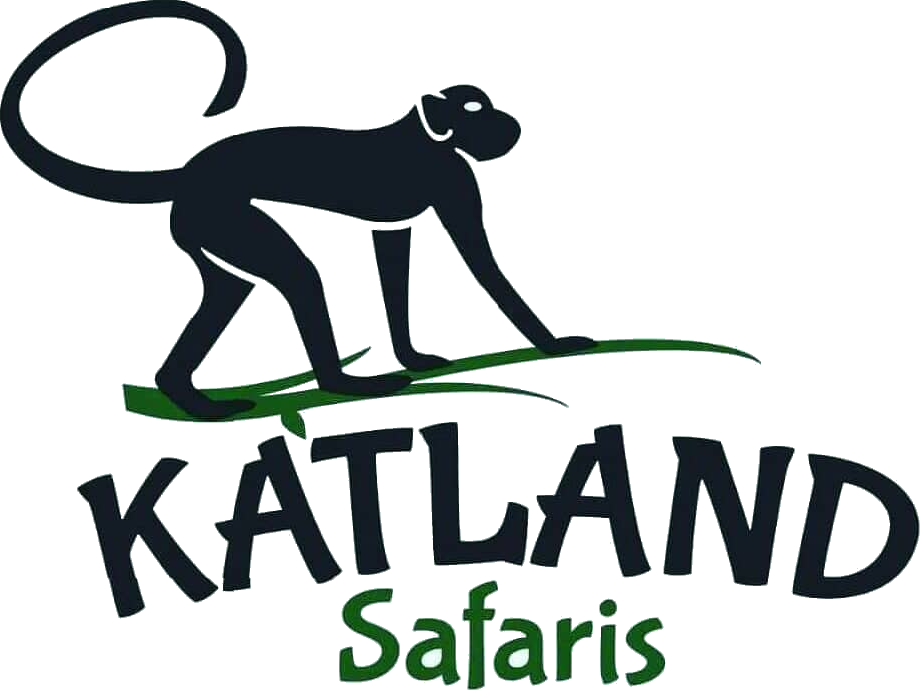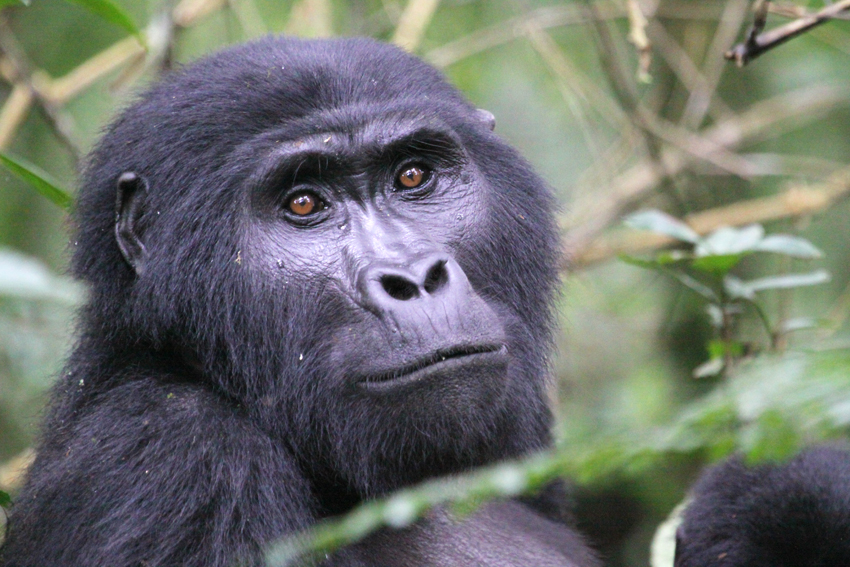What Is Queen Elizabeth National Park Famous For.
Have you ever wondered what makes Queen Elizabeth National Park so well-known? The biosphere reserve located at the base of the rift valley floor is Queen Elizabeth National Park. The park covers an area of around 1978 square kilometers. Numerous ecosystems are found here, providing a haven for a diverse array of animals.
Mountains beyond the park’s boundaries, where the Rwenzori ranges are raised to offer a stunning background, are responsible for its spectacular landscape. The elevation of Queen Elizabeth National Park ranges from 910 meters in Kazinga Channel to 1390 meters in the explosive crater area, for a total elevation of 480 meters.
Numerous habitats, such as forest cover, acacia woodland, bushy grassland, and lakeshore or marshy vegetation, provide homes for a diverse array of animals.
You may need to extend your Africa safari vacation to Uganda in order to see all of Queen Elizabeth National Park’s amazing features. Beyond what has been documented, there is yet more to discover about Queen Elizabeth National Park’s interior and surrounding areas.
The best things to do at Queen Elizabeth National Park are game drives and launch trips.
Visit to Katwe Salt Lakes, chimpanzee trekking, birdwatching, and a nature walk in Maramagambo Forest
Queen Elizabeth National Park’s game drives
The opportunity to observe a variety of wild species, including lions, leopards, hyenas, topis, bush bucks, warthogs, huge forest pigs, and mongooses, is one of the many reasons to take a morning or evening game drive on trails in Queen Elizabeth National Park.
There are many dry and wet craters visible during the 27-kilometer crater drive north of the Mweya peninsula. Additionally, following the North Kazinga and Kasenyi tracks may provide you the opportunity to see herds of buffaloes and elephants, to name a few. You could see lion drama as they steal to acquire a day’s food from Uganda Kobs who love to linger out here as you follow the Kasenyi open grasslands east of Kasenyi Road.
You may appreciate all of the park’s splendor by approaching any Uganda safari in Queen Elizabeth National Park with an open mind and not only focused on seeing a certain species.
A Kazinga Channel Launch Trip
The highlight of all safari activities in Queen Elizabeth National Park is taking part in the amazing launch voyage on the Kazinga Channel. The par authority operate two launches at 1500 and 1100 hours, depending on demand, starting at the pier under the Mweya Peninsula.
Mammals, reptiles, and a variety of birds that adorn the coastlines throughout the year may be seen from the launch. Africa Jacana, Water thick-nee, African open-billed stork, Grey-capped Warbler, Black-rumped Buttonquail, Red-capped Lark, Egyptian geese, larger and lesser flamingos, African skimmer, and others are among the species you may be able to view.
Watch out for schools of hippos who like spending their days in the water of the Kazinga Channel, as well as enormous Nile Crocodiles.
The icy peak of Mount Rwenzori may be beautifully visible if you take the afternoon launch on a sunny day. You have the opportunity to see the sun set since this journey takes almost three hours.
Hiking Chimpanzees in Kyambura Gorge
During chimpanzee hiking in Kyambura canyon, you will enter a 100-meter-deep canyon that runs along the rift valley bottom.
The Kyambura River, which joins Kazinga Channel after traversing the rift valley floor, twisted the valley. To participate in this trip, you must first get a chimpanzee trekking permit.
A ranger gives a lecture at the Kyambura’s fig tree camp before chimpanzee trekking begins. You go over the rules for hiking chimpanzees, which include, among other things, not irritating them or using flash photography.
You are only permitted to spend one hour with the chimps when you have located them, after which you must go so they can eat for the day.
Queen Elizabeth National Park Birdwatching
With over 621 bird species identified to far, Queen Elizabeth National Park is a great place to go bird watching. Many water birds are naturally drawn to the Kazinga waterway, which also serves as a trap for migrating birds from other countries.
African Wattled Plovers, Chestnut-crowned Sparrow-weaver, Silver Bird, Black-headed Gonolek, Croaking Cisticola, Blue-Naped Mousebird, shoebill, Yellow-backed and lesser Masked Canary, Standard-winged-backed Night Heron, saddle bill stork, Grey-crowned Crane, Yellow-throated Leaf Love, and Black Bee Eater are just a few of the birds you might be able to see.
A Nature Walk in the Forest of Maramagambo
It is really satisfying to take a stroll through one of Uganda’s famous tropical woods, and Maramagambo Forest is the best option. Numerous primates, including olive baboons, black and white colobus, red-tailed monkeys, grey-cheeked mangabeys, blue monkeys, and many more, call this natural, dense forest home.
You may reach Lake Nyamusingire, a copper-rich blue lake, a bat cave, and a python that eats bats by following the woodland track.
Lake Katwe Salt Visit Lake Katwe, Uganda, where the primary business is the mining of salt in pans. Since the beginning of time, salt has been extracted from evaporation beds using crude techniques. Many residents can recount the tale of how they make a livelihood by selling salt pans.
Accommodations in Queen Elizabeth National Park That Are Available
During your safari in Uganda, you may reserve accommodations that are luxurious, moderate, and affordable both within and outside Queen Elizabeth National Park.
Mweya Safari Lodge, Ishasha Wilderness Camp, Bush Lodge, Jacana Lodge, and Katara Lodge are some of these lodges’ amenities. There is no end to the list, Simba Safari Camp.
Your wonderful vacation was enhanced by a restful night’s sleep, but you must make your decision according to your financial constraints.
The Queen Elizabeth Falls National Park Travel Route
By road
There are two more ways to travel to Queen Elizabeth Nation Park from Kampala.
A distance of around 410 kilometers connects Kampala, Mubende, Fort Portal, Kasese, and Queen Elizabeth National Park. The northern path to Queen Elizabeth National Park is this one.
From Kampala via Mbarara to Kasese, then a about 420-kilometer trip into Queen Elizabeth National Park. The southern path to Queen Elizabeth National Park is well-known.
You may travel 64 kilometers via the Ishasha sector, home of the tree-climbing lions, or 160 km to Mweya after gorilla trekking in Bwindi Forest National Park.
By Air: Kajjansi Air Strip or Entebbe Airport are the departure points for domestic flights to Kasese Air Strip every day. You must reserve your seat in advance. Because the free baggage allowance is restricted, you must bring minimal luggage.
When Is Queen Elizabeth National Park the Best Time to Visit?
A Uganda safari to Queen Elizabeth National Park is best during the dry months of June through September and December. To make it easier to see the wild creatures, the grass is lower and the safari paths are drier.
The grass gets taller during the rainy seasons (March to May and November), making it difficult to see animals on a safari. However, this does not exclude you from seeing the animals.
How Much Does Park Admission Cost?
Admission to Queen Elizabeth National Park Adult admission to Queen Elizabeth National Park is $40 per adult per day.
This charge helps fund park conservation initiatives including patrol, ranger guide assistance, animal care, and upkeep.
Twenty percent of the park’s yearly earnings is returned to the community for community service in an effort to engage the local population in the animal conservation effort.
Things to Bring to Queen Elizabeth National Park for a Honeymoon
When your lodge’s lights go out and you need to find anything in the dark, you’ll need a torch.
During game drives, birdwatching, and other activities that need you to be in the outdoors, use insect repellent.
To document most of the aspects of your park experience, maintain a travel journal.
To see the park’s intriguing elements more clearly, you need binoculars.
Use sunscreen to save your skin from the scorching heat that Queen Elizabeth National Park experiences. during periods of extreme drought and hot temperatures, which may sometimes reach 30 degrees Celsius.
Bring light clothing, particularly in the arid months of June through September and December through mid-January. The park endures very chilly temperatures, particularly in the morning, therefore bring warm clothes for the early morning game drives.
a camera to capture images of the park’s wildlife, landscape, birds, and other fascinating features.
Wear a safari hat when driving on the paths in Queen Elizabeth National Park to shield your hair from dust.
Some hard currency to buy souvenirs and other necessities.
Dust-removing wipes for game drives
When one goes low, you may swap it out for another fully charged battery.
Flip-flops and safari boots are required for the wildlife drive in the automobile.
In the woods, use insect repellent to ward against stinging insects.
A first aid bag in case you get ill or are injured while on safari in Uganda
An adapter for travel in case you need to recharge any electrical devices
toiletries that are beneficial to your skin or health, such as toothpaste and soap.
Check out our Trip Advisor review and get in touch with us for further details.


